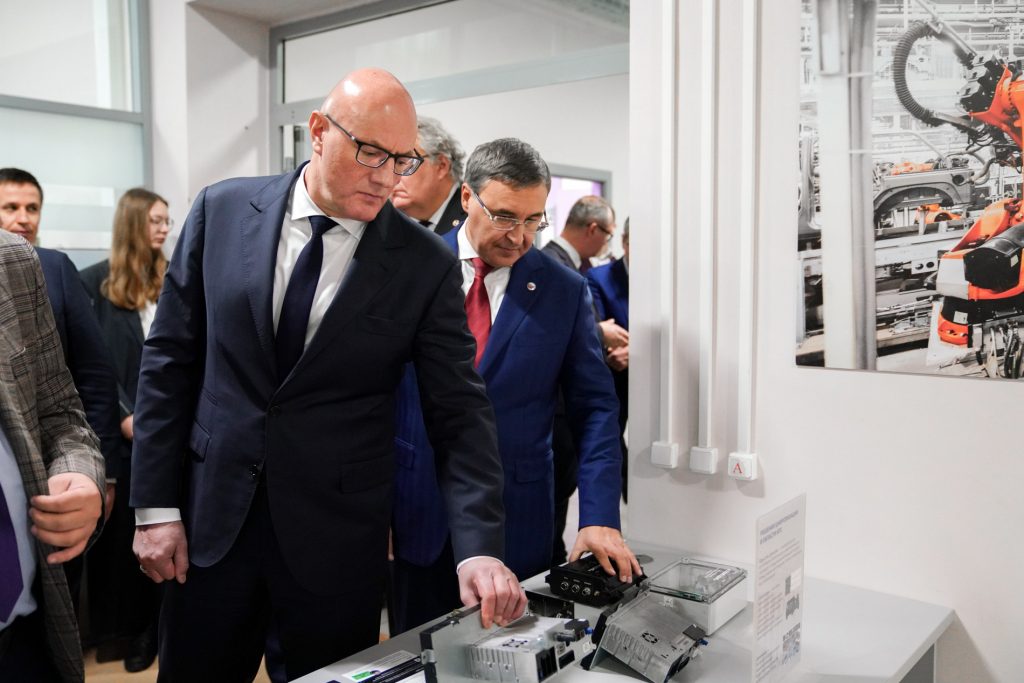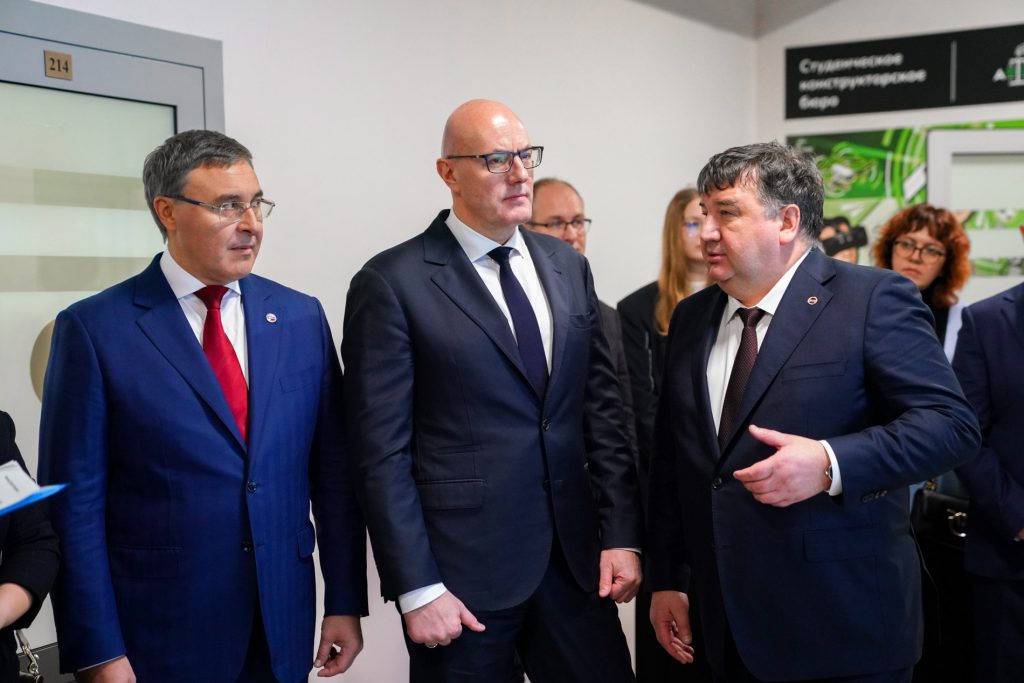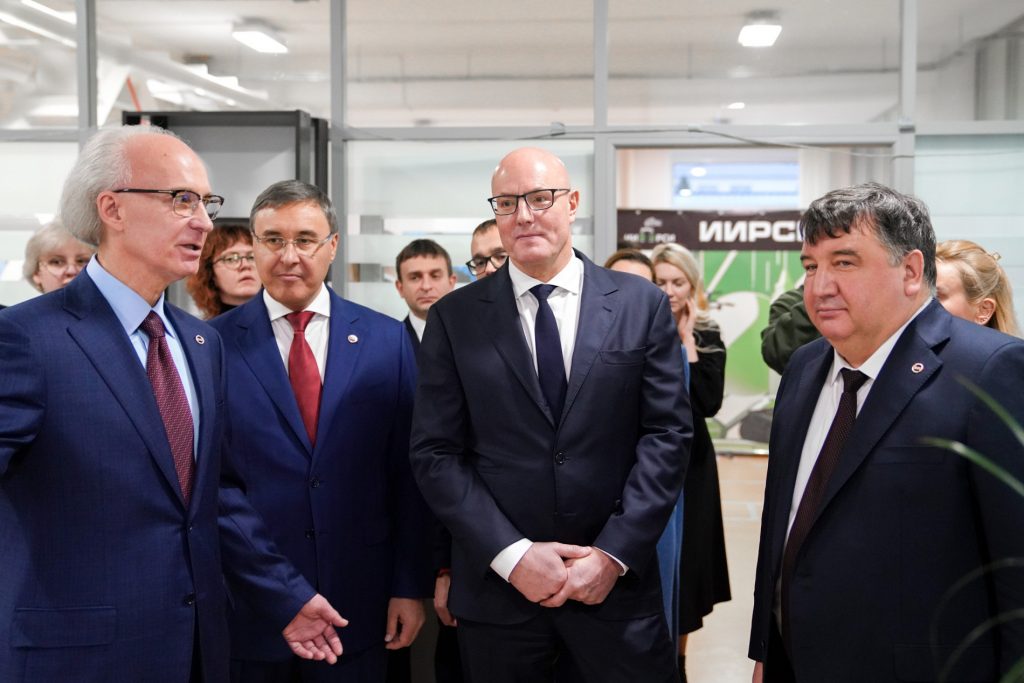Innovative projects for technological sovereignty demonstrated to Vice-Premier of Russia Dmitry Chernyshenko and Minister of Science and Higher Education of Russia Valery Falkov




Kazan Federal University celebrates the 220th anniversary of its foundation.
On this occasion, Deputy Prime Minister of the Russian Federation Dmitry Chernyshenko took part in the university’s ceremonial events as an honorary guest.
During the visit, the Deputy Prime Minister also paid attention to a number of scientific developments of one of the leading universities in Russia. In particular, accompanied by the Minister of Science and Higher Education of Russia Valery Falkov and the Rector of KFU Lenar Safin, he inspected the instrumentation and laboratory facilities of the Institute of Artificial Intelligence, Robotics and Systems Engineering (IAIRSI).
The educational institution was created as a result of the modernization of the KFU’s Engineering Institute with the aim of promoting the implementation of the university’s development program, as well as solving problems in artificial intelligence, unmanned aviation, intelligent transport systems and robotic systems.
Dmitry Chernyshenko toured the equipment and projects of the Center for Intelligent Manufacturing and Additive Technologies and the Laboratory of Robotics and Unmanned Platforms. He was also introduced to the activities of the Center for Prototyping, 3D Reconstruction and Materials Design.
This center is an element of the infrastructure for supporting and developing the university’s technological projects in engineering and production complexes. A complete system for manufacturing is implemented here – from computer design to technological equipment.
For example, the universal block option for retrofitting agricultural machinery to automation level 4+ Retrofit allows solving the current problem of personnel shortage in such specialty as machine operators. The system contains control, navigation, signal reception/transmission mechanisms and allows agricultural work to be performed without involving a large number of individual workers, which has a positive effect on the volume of work.
In the Laboratory of the Internet of Things and Digital Signal Processing, the Deputy Prime Minister assessed projects aimed at introducing smart systems in such areas as medicine, education, scientific research, security, sports and many others.
The Homo Meliorus lidar-sonar vision system is aimed at improving the quality of life of people with extremely impaired vision or complete blindness. It provides the user with information about the distance to surrounding objects, helps them read, recognize objects and people.
The underwater unmanned vehicle NERPA was also presented in this laboratory. It provides the ability to remotely control and allows, regardless of the time of year and day, to conduct a visual inspection of parts of vehicles and structures located under water.
Then Dmitry Chernyshenko visited the Student Design Bureau – a single ecosystem of robotic platforms of all types and all environments for schoolchildren and students of all ages. This platform serves to build individual trajectories for the growth of students’ qualifications and competencies, their involvement in scientific and technical creativity and project research activities.
Thanks to their work in the Student Design Bureau, students participate in grant competitions FASIE, Umnik, business contracts and consulting services, and also carry out projects implemented within the framework of the national program Digital Economy, the national strategy for the development of artificial intelligence. and the national project Unmanned Aircraft Systems.
The tour of this location ended with a conversation with students and young scientistrs, during which they discussed support measures for the development of research work, as well as the participation of children in volunteer activities.
“For the Government, youth policy is a priority. This year we adopted the Strategy which was developed together with you. The national project Youth and Children is being prepared. Therefore, at this meeting it was very important for me to receive feedback, to understand what projects young people willingly participate in, to what extent participation in projects helps to become professionals,” said the Deputy Prime Minister.
Continuing his tour, Chernyshenko specifically focused on projects to develop a medical outpatient and industrial personnel monitoring system and a high-precision inertial-satellite navigation unit for vehicles. And the precision robot manipulator (artist) PICASSO copied an existing painting in detail for the guests using smooth movement algorithms. The technical novelty of such a development allows painting in RGB colors using an airbrush or pencil.
Finally, the delegation went to the Neurolab, a neural marketing research laboratory, which is a set of professional neurophysiological equipment and software for measuring respondents’ unconscious reactions to various types of content.
The technological solution developed here identifies and analyzes problems in the perception of risky situations, evaluates safe behavior skills when driving vehicles, as well as stress levels of pilots, drivers, and operators of complex systems. Based on the analysis results, the system identifies key areas for training to correct unsafe behavior.
There are specific developments and methods that make a significant contribution to ensuring the technological sovereignty of Russia and training qualified engineering personnel for the economy.

